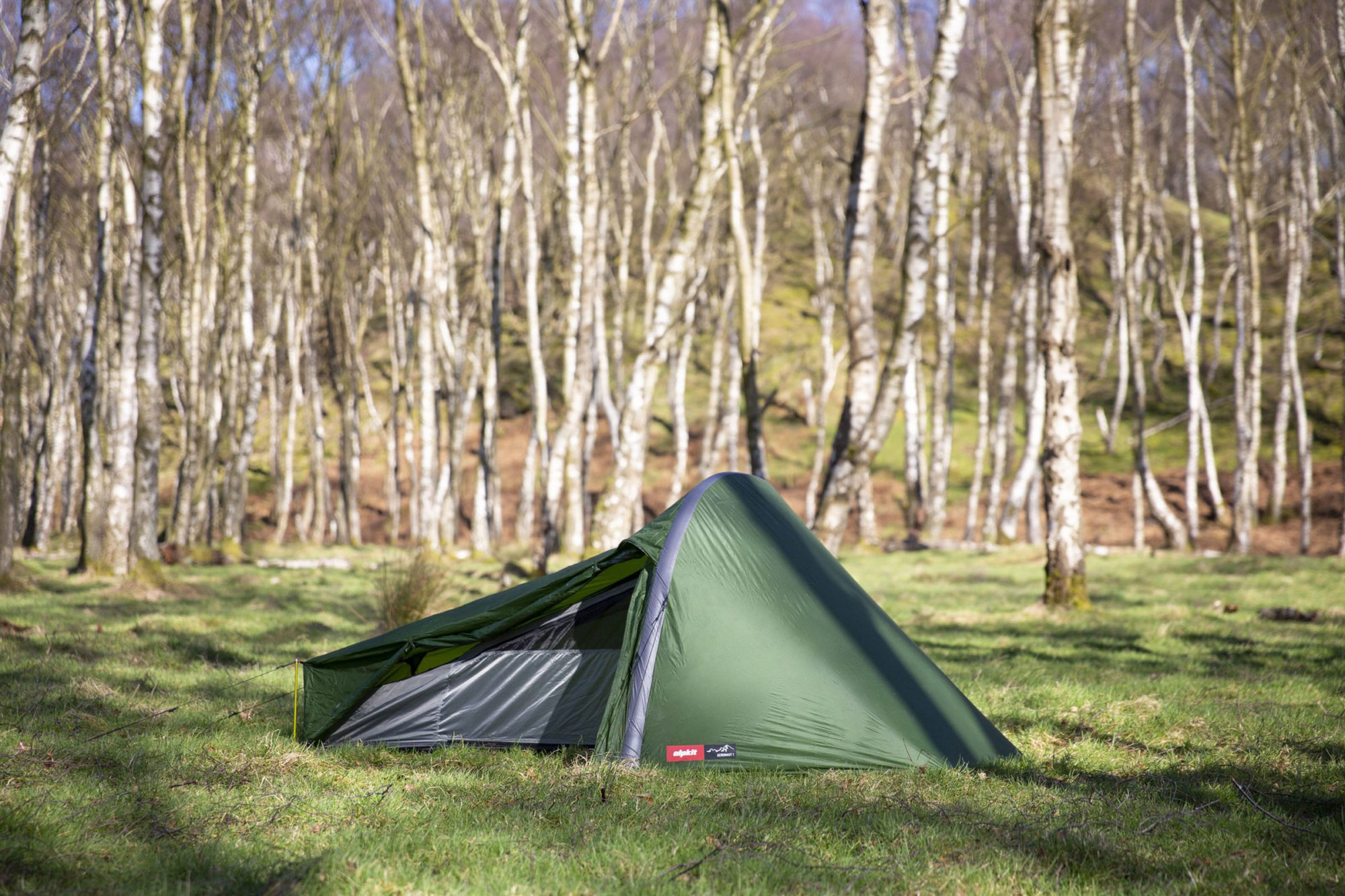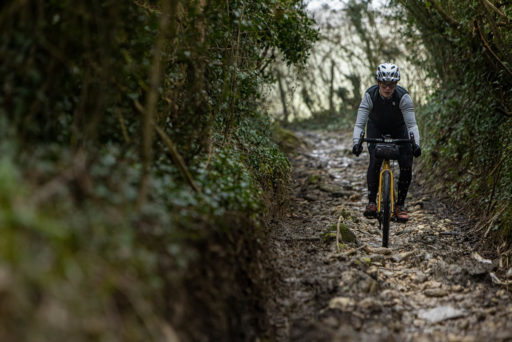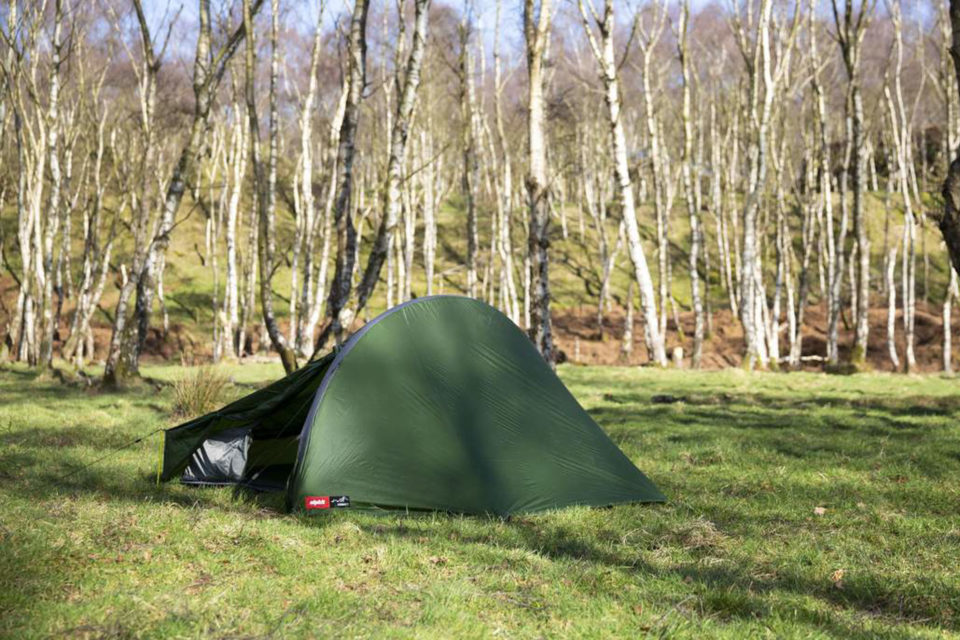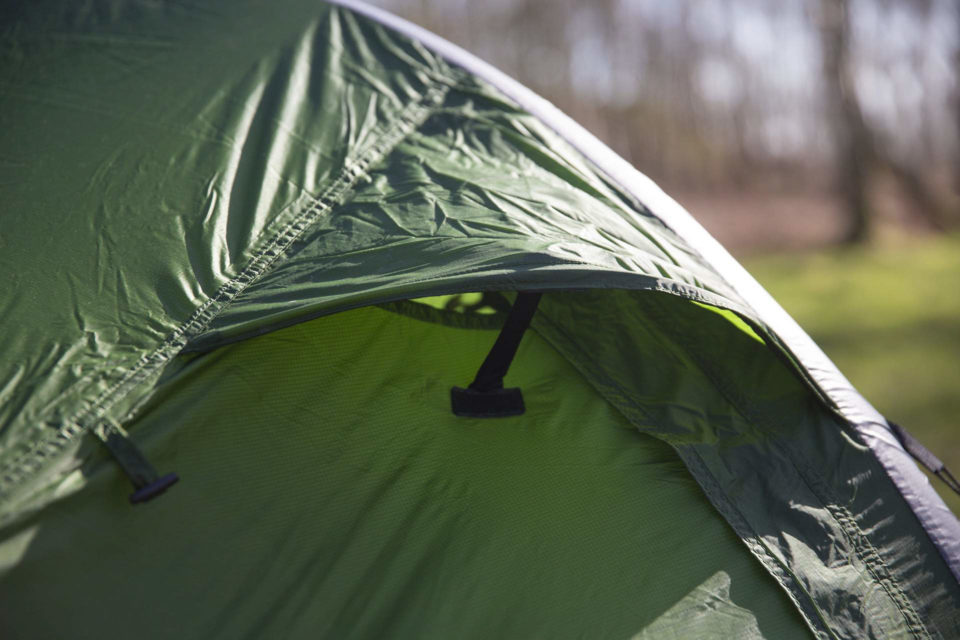Alpkit’s new Aeronaut and Polestar tents prioritize pack size and durability by replacing traditional poles with inflatable pillars and trekking poles. Learn more about both here…
Alpkit just announced two new tent models, both of which are available for preorder now. The main goal behind the new designs was to eliminate traditional tent poles altogether, allowing for easier packing when dealing with small packs, awkward spaces, or when splitting between multiple people. The new Aeronaut uses an inflatable air pole to provide structure to the tent, while the new Polestar is designed to pitch using two trekking poles. Find details on both below.
Alpkit Aeronaut
Although it’s not the first time we’ve seen inflatable pillars built into tents, it’s a first for Alpkit, and it’s cool to see them trying new designs. The Aeronaut is a three-season tent with a two-layer construction that relies on a single inflatable TPU arch instead of tent poles. Its non-freestanding design requires the two ends of the tent to be staked out. The mesh inner and ripstop nylon outer can be pitched together for fast setups.

Alpkit explains, “We were finding that there’s a lot of frustration in perfecting your bikepacking set-up, only to realise that you’ve still got to fit 40cm long poles somewhere on your bike – not an easy thing to do!
By using innovative new construction techniques, we were able to design a tent that fits neatly between the narrowest of drop bars and stuffs into the most awkward of seatpack spaces without using large alloy poles. Removing these rigid main poles removes one of the biggest obstacles to easy tent packing. But it’s not just bikepacking where this is a huge advantage. The packability of the Aeronaut makes it ideal for outdoor holidays abroad, lightweight backpacking, canoe and kayak camping – any activity with limited or awkward packing space.”
The TPU air pole’s Schrader valve is inflated using a standard bike pump or foot pump, and can be patched in the event of a puncture. The outer fabric is made from 15D Si/PU ripstop nylon, the inner layer is 20D nylon, and the floor is a 20D PU ripstop nylon. The Aeronaut comes in both one-person and two-person sizes and is available for preorder now. Scroll down for specs and additional photos.
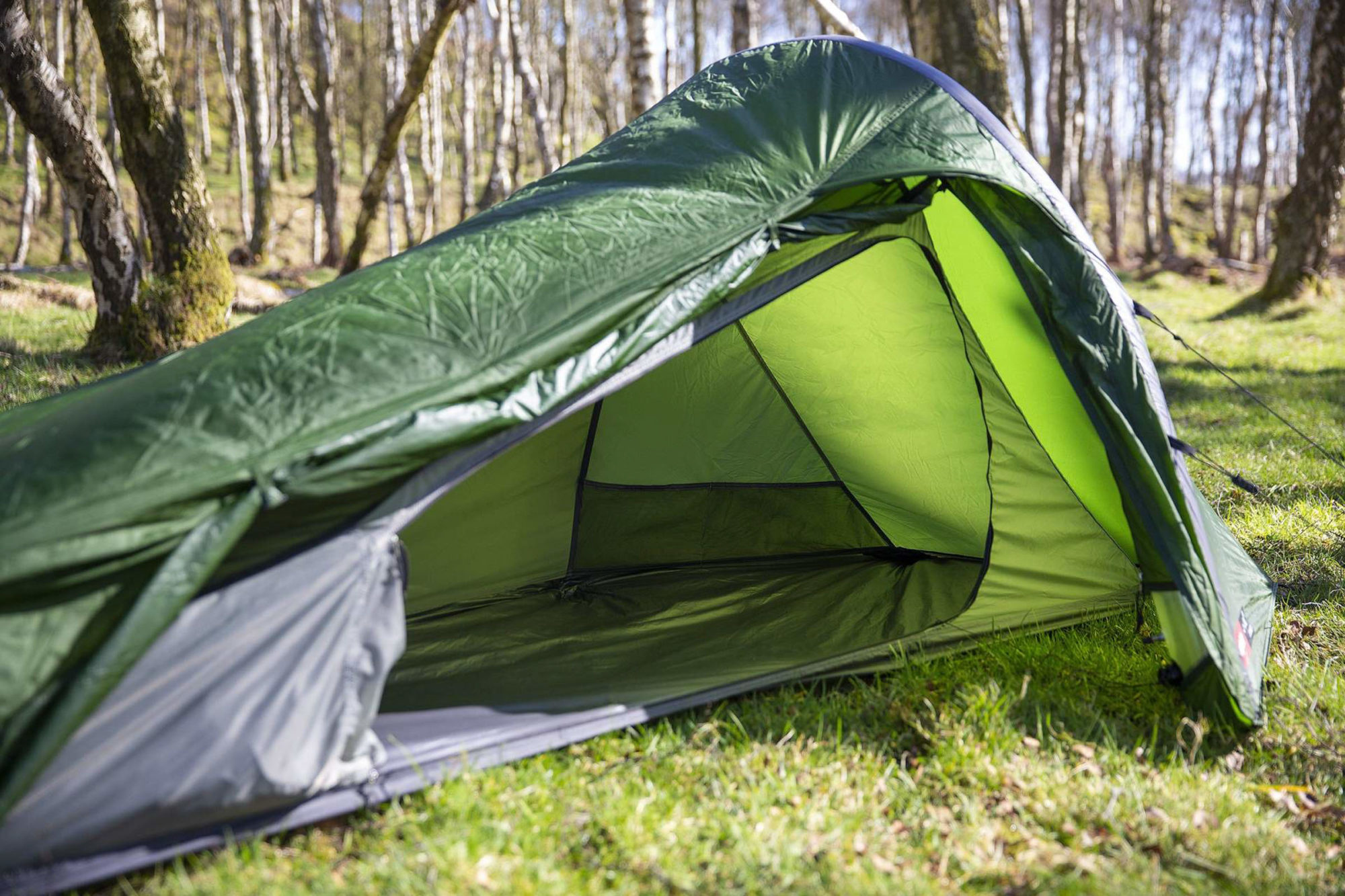
Alpkit Aeronaut 1-Person Specs
- Packed Size: 11 x 5″ (28 x 13cm)
- Length / Width: 95 x 57″ (240 x 145cm)
- Weight: 1,100 grams (estimated)
- Place of Manufacture: China
- Price: £179.99 (~$250 USD)
- Manufacturer’s Details: Alpkit.com
Alpkit Aeronaut 2-Person Specs
- Packed Size: 13 x 6″ (32 x 15cm)
- Length / Width: 98 x 79″ (250 x 200cm)
- Weight: 1,400 grams (estimated)
- Place of Manufacture: China
- Price: £199.99 (~$275 USD)
- Manufacturer’s Details: Alpkit.com
Alpkit Polestar
- Packed Size: 11 x 5″ (28 x 13cm)
- Length / Width: 95 x 57″ (240 x 145cm)
- Weight: 1,100 grams (estimated)
- Place of Manufacture: China
- Price: £179.99 (~$250 USD)
- Manufacturer’s Details: Alpkit.com
Alpkit Aeronaut 2-Person Specs
- Packed Size: 13 x 6″ (32 x 15cm)
- Length / Width: 98 x 79″ (250 x 200cm)
- Weight: 1,400 grams (estimated)
- Place of Manufacture: China
- Price: £199.99 (~$275 USD)
- Manufacturer’s Details: Alpkit.com
Alpkit Polestar
- Packed Size: 13 x 6″ (32 x 15cm)
- Length / Width: 98 x 79″ (250 x 200cm)
- Weight: 1,400 grams (estimated)
- Place of Manufacture: China
- Price: £199.99 (~$275 USD)
- Manufacturer’s Details: Alpkit.com
Alpkit Polestar
The Polestar, although not quite as applicable to bikepackers, is designed to be a stable and reliable shelter that pitches using trekking poles to save on weight and packing space. It relies on two crossed poles to provide structure, while a slightly heavier 20D nylon is used for the body of the tent for added durability. It features a bathtub-style floor, mesh inner, a short collapsible pole to support the foot of the tent, and requires eight stakes for a proper setup.
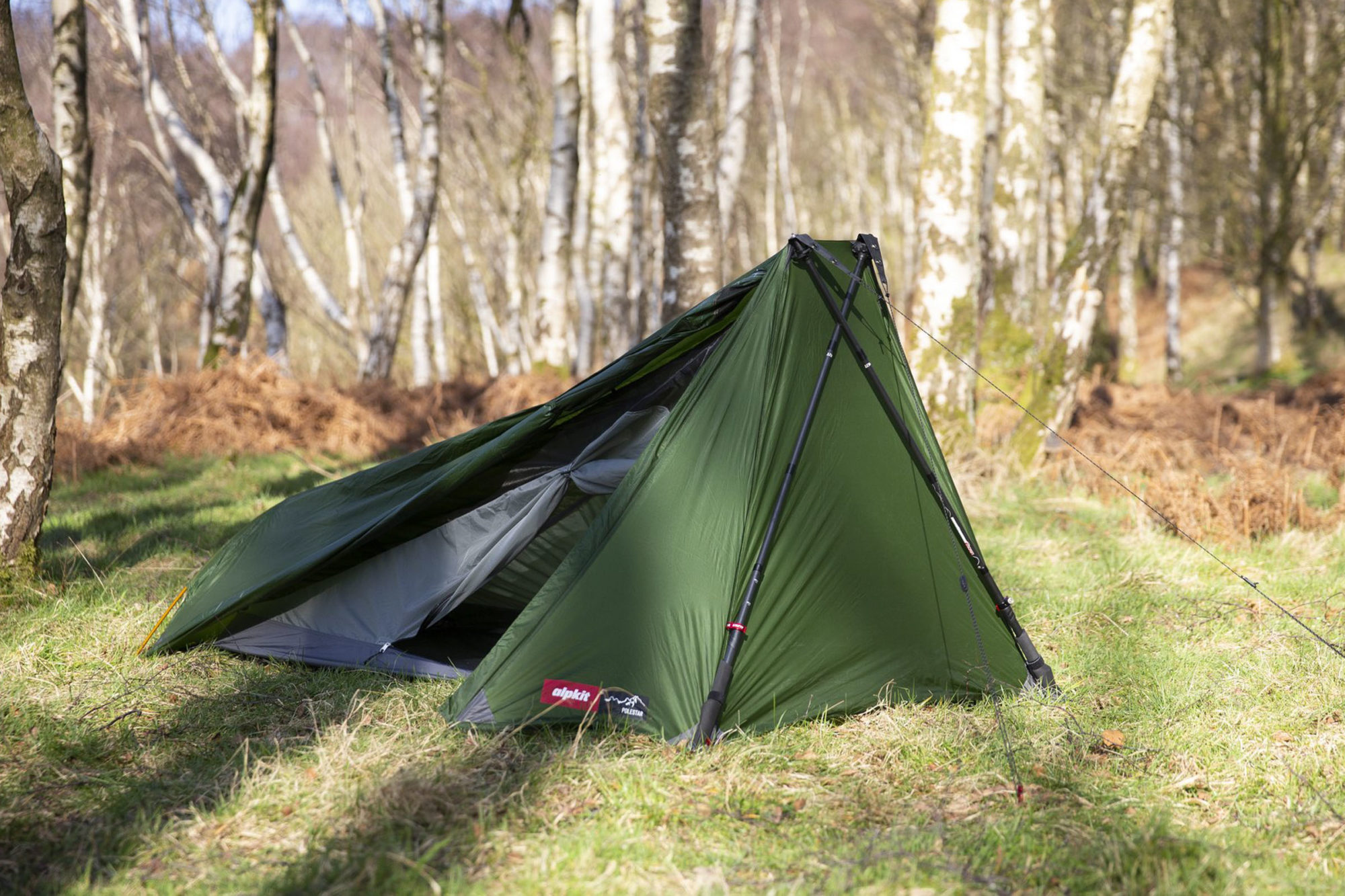
That’s all we’ve got for now, but Alpkit says the Polestar weighs in less than a kilogram and packs down small. Keep an eye on Alpkit.com later this summer to learn more.
For the whole story on the new designs, check out Alpkit’s original blog post here.
Please keep the conversation civil, constructive, and inclusive, or your comment will be removed.






